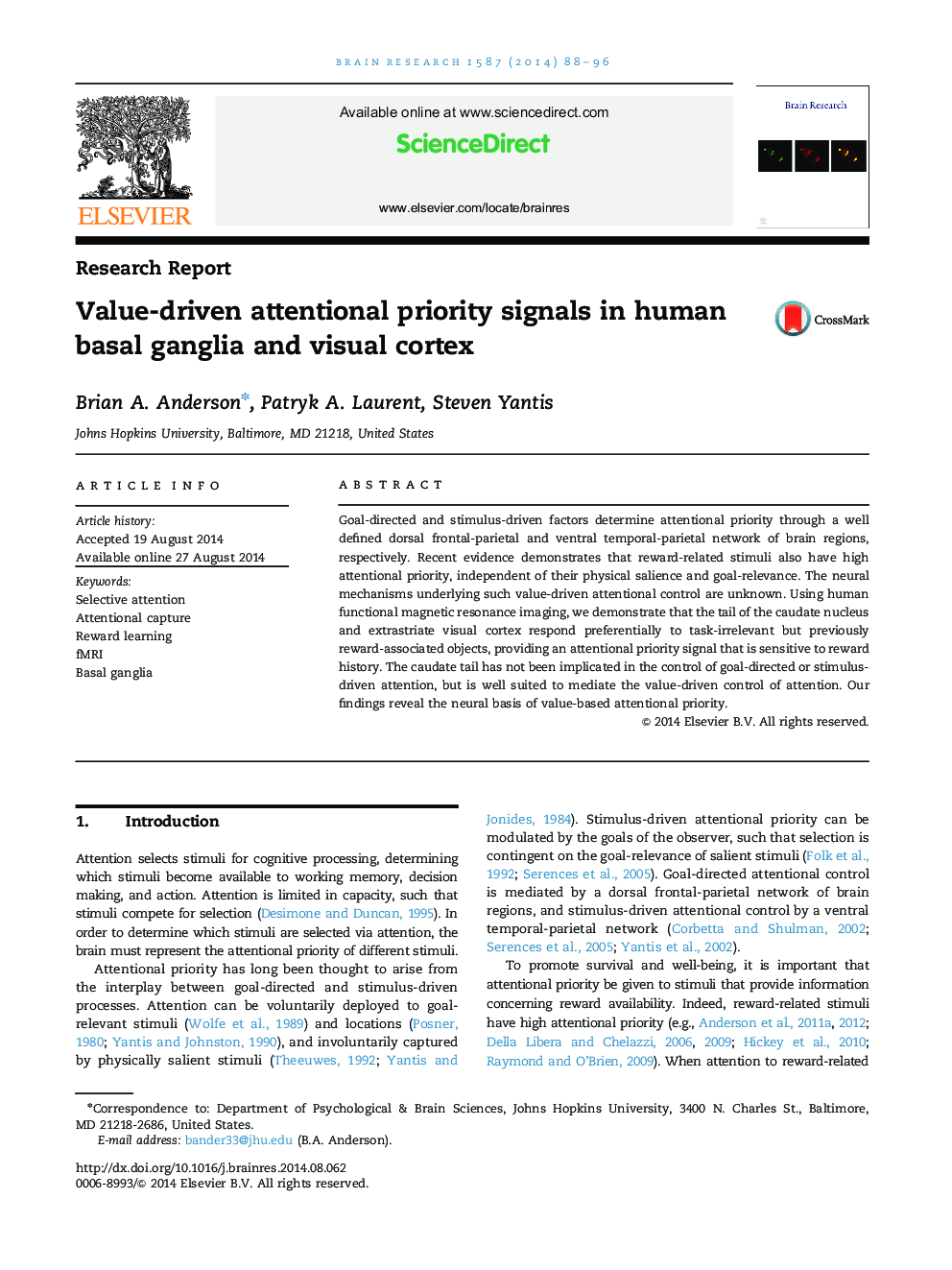| Article ID | Journal | Published Year | Pages | File Type |
|---|---|---|---|---|
| 6263269 | Brain Research | 2014 | 9 Pages |
â¢Stimuli previously associated with reward were presented as irrelevant distracters.â¢The distractors involuntarily captured attention, slowing target identification.â¢The distractors evoked elevated signals in basal ganglia and visual cortex.â¢The findings reveal the neural correlates of value-driven attentional capture.
Goal-directed and stimulus-driven factors determine attentional priority through a well defined dorsal frontal-parietal and ventral temporal-parietal network of brain regions, respectively. Recent evidence demonstrates that reward-related stimuli also have high attentional priority, independent of their physical salience and goal-relevance. The neural mechanisms underlying such value-driven attentional control are unknown. Using human functional magnetic resonance imaging, we demonstrate that the tail of the caudate nucleus and extrastriate visual cortex respond preferentially to task-irrelevant but previously reward-associated objects, providing an attentional priority signal that is sensitive to reward history. The caudate tail has not been implicated in the control of goal-directed or stimulus-driven attention, but is well suited to mediate the value-driven control of attention. Our findings reveal the neural basis of value-based attentional priority.
